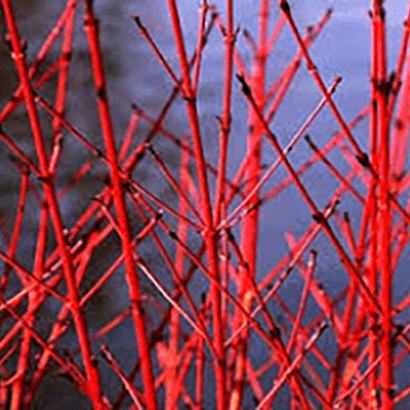January and February are particularly miserable months with the enjoyment of Christmas a dim and distant memory and the summer months seeming so far away; this is when some thoughtful winter planting can lift the spirits. The weather and the short days don’t help but on those few but wonderful crisp and sunny days a wander around the garden can reveal all manner of delights. There is a vast array of plants providing winter interest from coloured stems, to evergreen foliage, flowers and perfume all of which will brighten the longest of winters. Here are just a few suggestions.
Perfume
Lonicera x purpusii ‘Winter Beauty’
Hamamelis x intermedia ‘Arnold Promise’
Daphne bholua ‘Jacqueline Postill’
Chimonanthus praecox
Sarcococca humilis
Flowers
Mahonia
Helleborus
Clematis cirrhosa
Bergenia
Heather
Snowdrops
Crocus
Foliage
Ophiopogon
Pinus mugo
Polystichum
Elaeagnus
Buxus
Taxus
Stems and Bark
Cornus sanguinea ‘Midwinter Fire’
Cornus alba ‘Kesselringii’
Acer palmatum ‘Sango-kaku’
Betula utilia var. ‘Jacquemontii’
Salix alba var. vitellina ‘Britzensis’
Prunus serrula
Acer griseum
Berries
Ilex aquifolium ‘Alaska’
Pyracantha
Sorbus
Gaultheria
There are also plants that look good even when dormant and when covered in frost reveal a certain beauty. Many of the ornamental grasses stand well through the winter, particularly Miscanthus varieties and the upright stems of calamagrostis and panicum. Even some perennials look appealing in their winter state when seen amongst over plants with winter interest for example sedum, monarda and helenium.
It is often the positioning and combination of plants that will give most impact. The glowing stems of the dogwoods will look on fire when back lit by a low winter sun and the effect will be increased by the proximity of some evergreens to give depth to the arrangement; consider the low growing Pinus mugo ‘Mops’ in the foreground to frame the bright stems and the base of this can be highlighted with drifts of snowdrops or winter flowering heathers.
Different foliage textures will also serve to highlight the qualities of individual plants. The feathery grasses emphasise the solidity of conifers and the tiny leaves of sarcococca highlight the form of bigger leaved shrubs such as mahonia or camellia.
By experimenting with different combinations some wonderful effects can be created and by taking in to account the shape, size and colour of a plant and even the direction the light falls on it, can make a big difference to the overall effect. A few tweaks to an existing border can make a world of difference; if you are unhappy with a particular planting scheme take a photo of it and draw over the image introducing different shape and height combinations and when you arrive at something more pleasing translate this in to the space. You may surprise yourself what you come up with.

